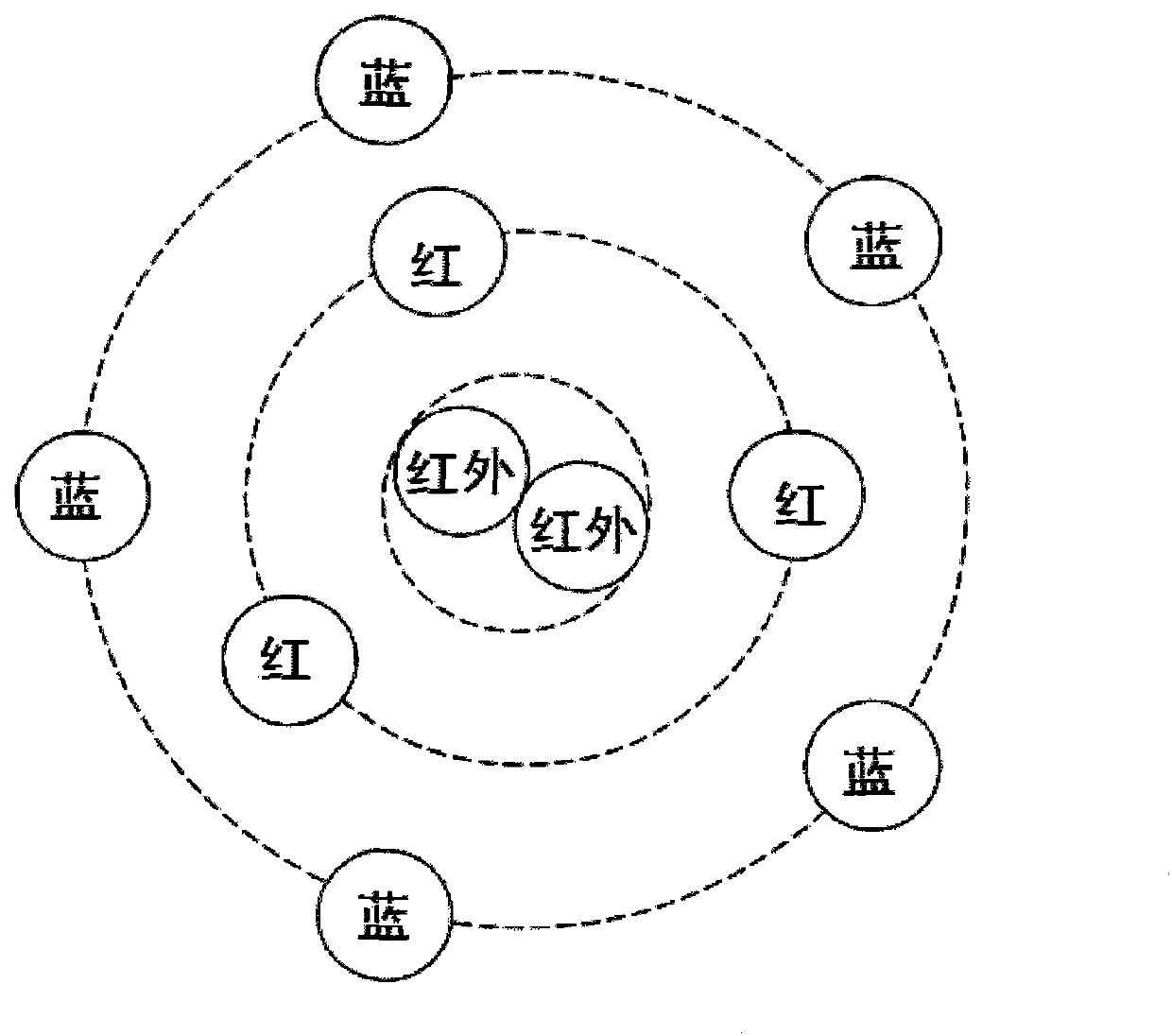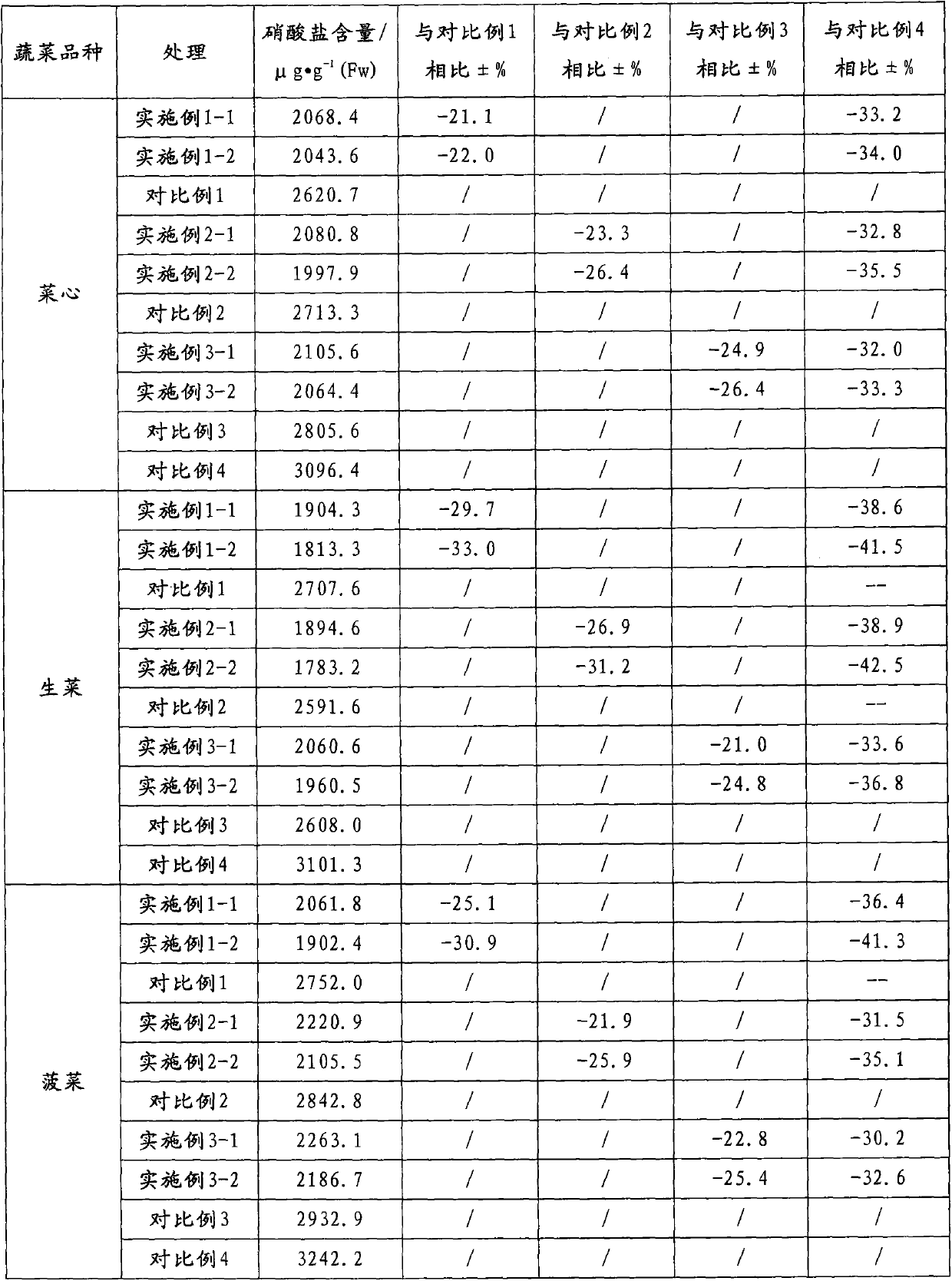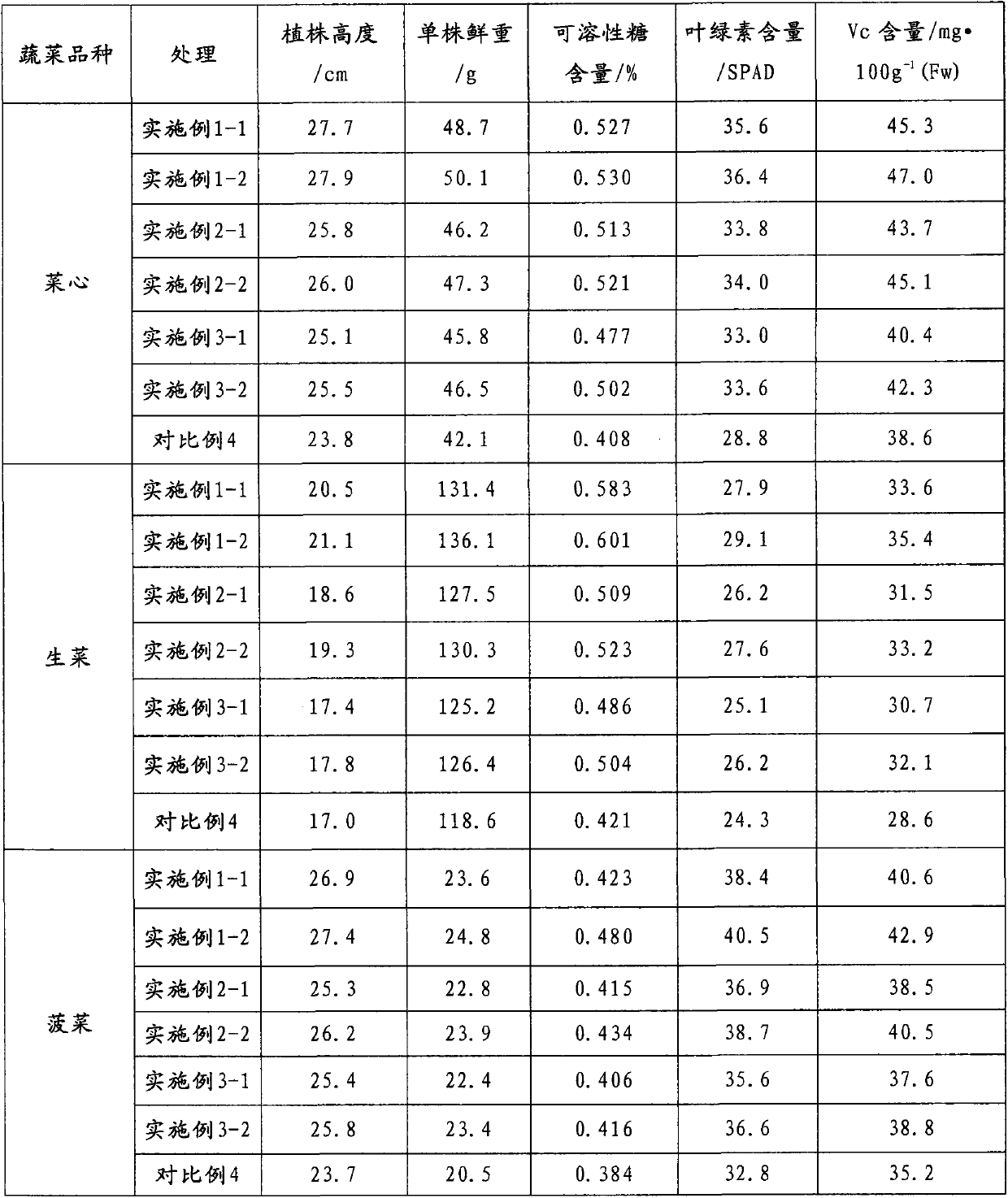Method for using LED light source to lower nitrate content in leaf vegetables
A technology of nitrate content and LED light source, applied in gardening methods, botanical equipment and methods, applications, etc., can solve the problems of rising ambient temperature, inability to use light energy, and low utilization rate of plant light energy, so as to reduce nitrate content , the effect of reducing energy consumption
- Summary
- Abstract
- Description
- Claims
- Application Information
AI Technical Summary
Problems solved by technology
Method used
Image
Examples
Embodiment 1-1
[0018] The distribution of the three kinds of LED lights on the irradiation unit is: the blue LED lights are evenly distributed on a circle with a diameter of 8.5cm; the red LED lights are evenly distributed on a circle with a diameter of 4.5cm; the infrared light is evenly distributed On a circle with a diameter of 2.5cm, the center of the circle where the three LED lights are located coincide;
[0019] Blue light: wavelength 450nm, light quantum flux density 0.78μmol·m -2 ·S -1 ;
[0020] Red light: wavelength 630nm, light quantum flux density 0.79μmol·m -2 ·S -1 ;
[0021] Infrared light: wavelength 735nm, light quantum flux density 0.45μmol·m -2 ·S -1 ;
[0022] 10 days before the picking of Chinese cabbage, lettuce and spinach, use 22:00-2:00 every night figure 1 The shown LED irradiation unit irradiates for 4 hours. Each vegetable experiment area 3m 2 , Install 3 irradiation units each, the number of LED lights installed in each irradiation unit is 5 blue LED lights, 3 red LED...
Embodiment 1-2
[0024] The number of LED lights in the irradiation unit of Example 1-1 is doubled according to the ratio of blue light: red light: infrared light = 5:3:2, namely 10 blue LED lights, 6 red LED lights and infrared light There are 4 LED lights, and the rest of the experiment methods are the same as in Example 1-1.
Embodiment 2-1
[0028] The distribution of the three types of LED lights on the irradiation unit is: the blue LED lights are evenly distributed on a circle with a diameter of 12.5 cm; the red LED lights are evenly distributed on a circle with a diameter of 6.5 cm; the infrared light is evenly distributed On a circle with a diameter of 3.5cm, the center of the circle where the three LED lights are located coincide;
[0029] Blue light: wavelength 440nm, light quantum flux density 0.78μmol·m -2 ·S -1 ;
[0030] Red light: wavelength 620nm, light quantum flux density 0.79μmol·m -2 ·S -1 ;
[0031] Infrared light: wavelength 745nm, light quantum flux density 0.45μmol·m -2 ·S -1 ;
[0032] 8 days before the picking of Chinese cabbage, lettuce and spinach, use 22:00-2:00 every night figure 1 The shown LED irradiation unit irradiates for 4 hours. Each vegetable experiment area 3m 2 , Each install 3 irradiation units, the irradiation height is 80cm from the top of the plant.
PUM
 Login to View More
Login to View More Abstract
Description
Claims
Application Information
 Login to View More
Login to View More - R&D Engineer
- R&D Manager
- IP Professional
- Industry Leading Data Capabilities
- Powerful AI technology
- Patent DNA Extraction
Browse by: Latest US Patents, China's latest patents, Technical Efficacy Thesaurus, Application Domain, Technology Topic, Popular Technical Reports.
© 2024 PatSnap. All rights reserved.Legal|Privacy policy|Modern Slavery Act Transparency Statement|Sitemap|About US| Contact US: help@patsnap.com










